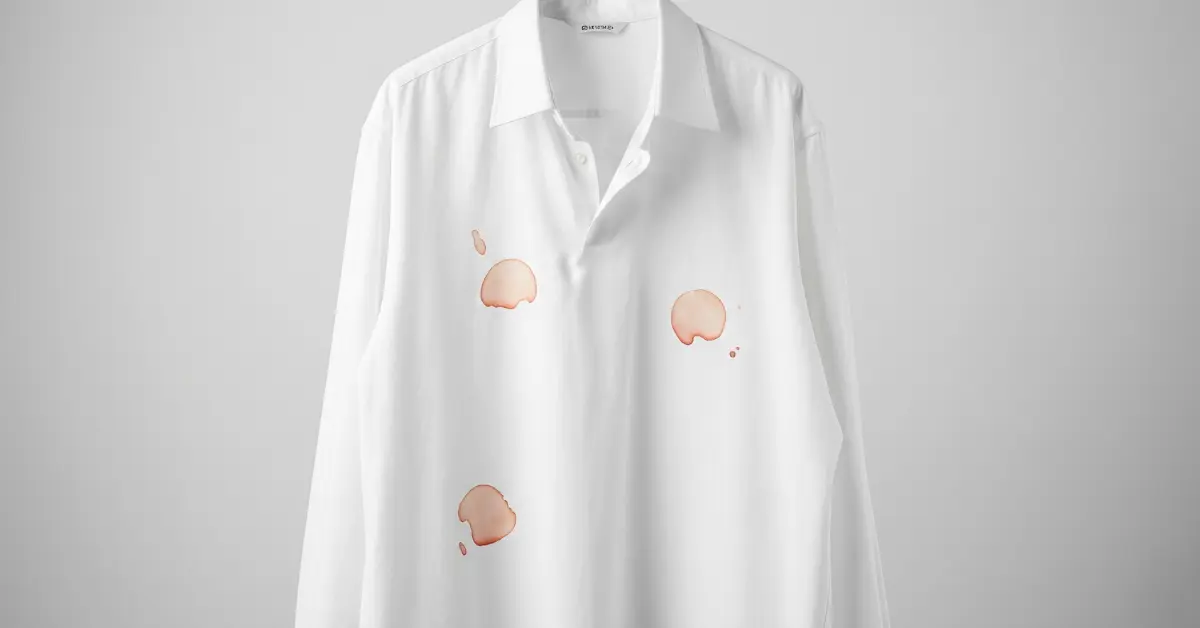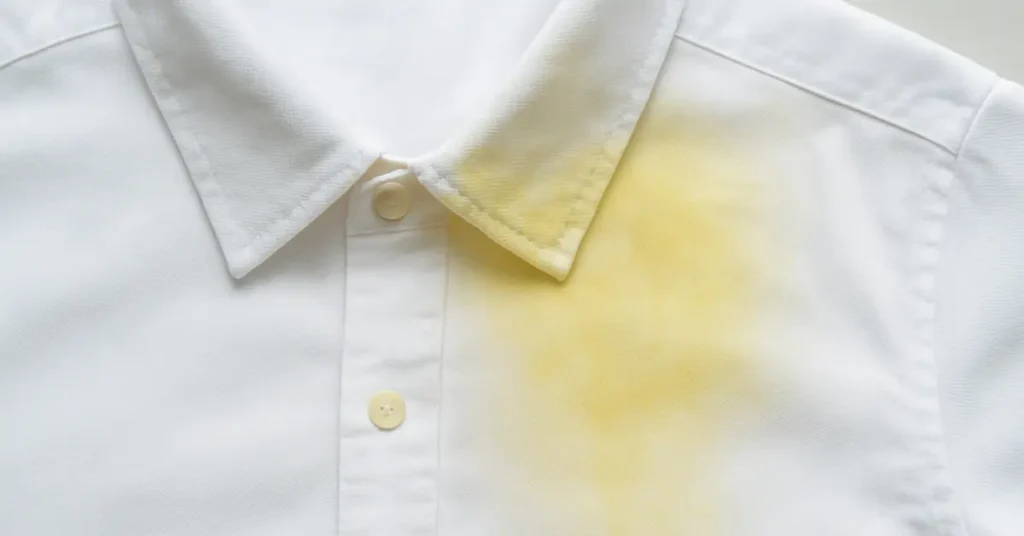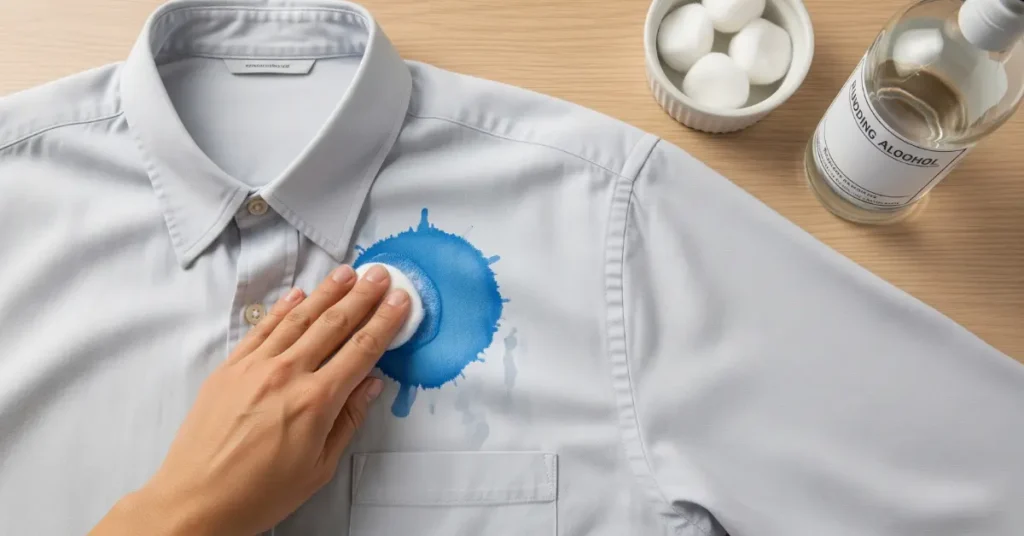White clothes look great, but even the smallest stain can ruin them. After a lot of trial and error, I found a few simple methods that actually work.
Most of the time, I pre-treat stains with liquid laundry detergent or a baking soda paste, let it sit for a few minutes, then wash it with warm water. For tougher stains, hydrogen peroxide or oxygen bleach works best.
These steps have saved many of my white clothes. But not every stain is the same, so it’s important to know the right way to handle each one.
In the next sections, I’ll share exactly how I deal with different stains so you can keep your whites looking fresh.
Types of Stains on White Clothes
Before I clean any stain, I first figure out what type it is. Over the years, I’ve noticed that white clothes usually get marked by the same few culprits:
- Protein-based stains: Blood, milk, or eggs often leave these marks. They need gentle handling.
- Oil stains: Cooking oil is the one I deal with most. That’s why I avoid wearing whites in the kitchen.
- Tannin stains: Coffee, tea, wine, or juice. These are common at parties and family dinners.
- Ink and dye stains: From pens, markers, or even color transfer in the wash.
- Sweat stains: Those yellowish marks under the arms or on collars that don’t go away easily.
- Sauce and cosmetic stains: Whether it’s ketchup or foundation, I always check if it’s oil or water-based before treating it.
Each type needs its own method, which I’ll explain in the next part, but these are the stains I mostly deal with on white clothes, and there are many others. I’ve also shared a simple breakdown of stain types that might help.
Here’s How to Remove Stains from White Clothes
Over time, I’ve tried many ways to get stains out of my white clothes, both with and without washing. These are the methods that have worked best for me.
1. Spot Cleaning Without Washing
This method is quick and works well when you are traveling or dealing with delicate fabrics.
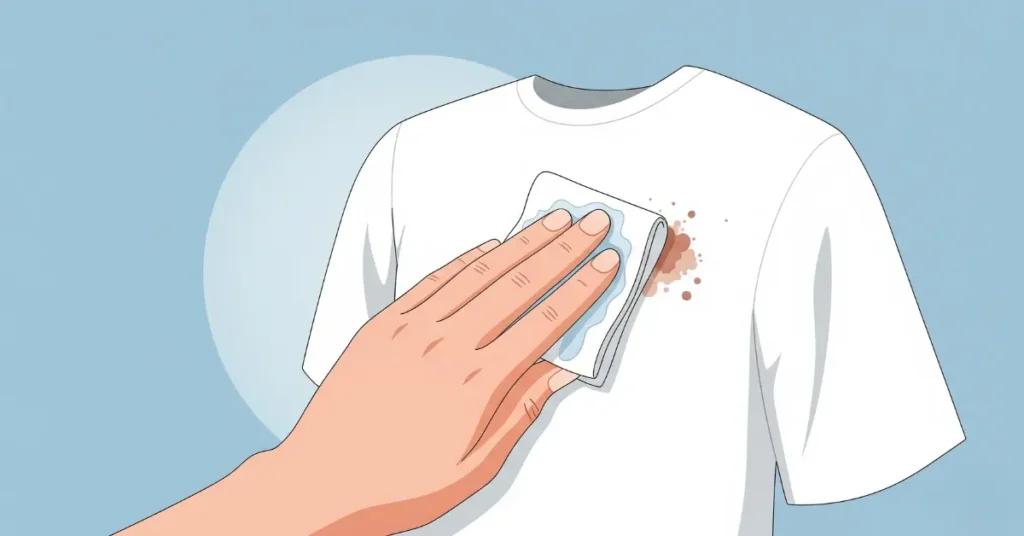
Whenever I spot a stain and don’t want to wash the whole piece, I gently blot it with a clean, damp cloth.
I try not to rub too hard, just press lightly so the stain starts coming off. Doing this first really helps before moving on to the next cleaning step.
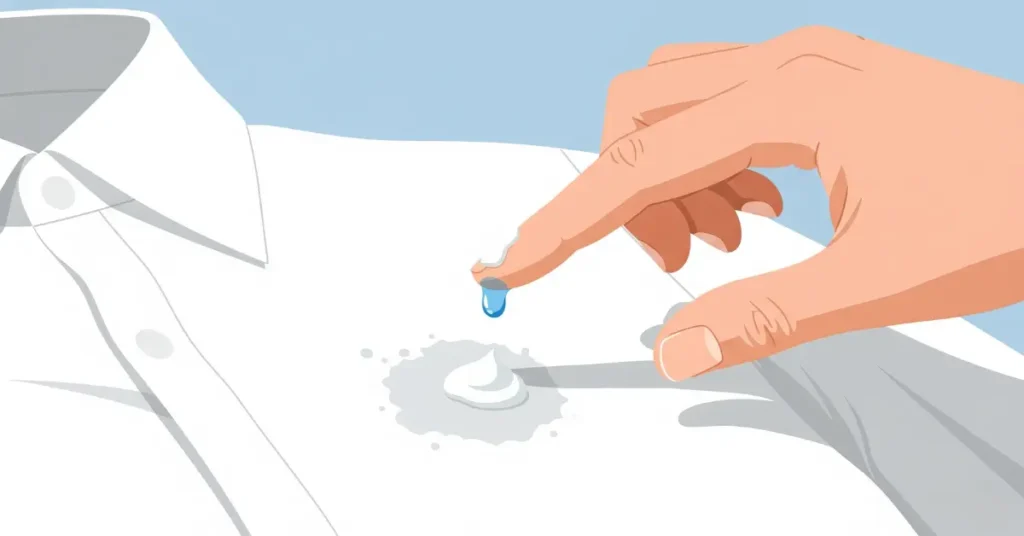
Then I apply a bit of liquid detergent or make a small paste with baking soda and water.
I spread it gently over the stain, making sure it covers the area evenly. Doing this carefully helps the stain start to lift without hurting the fabric.
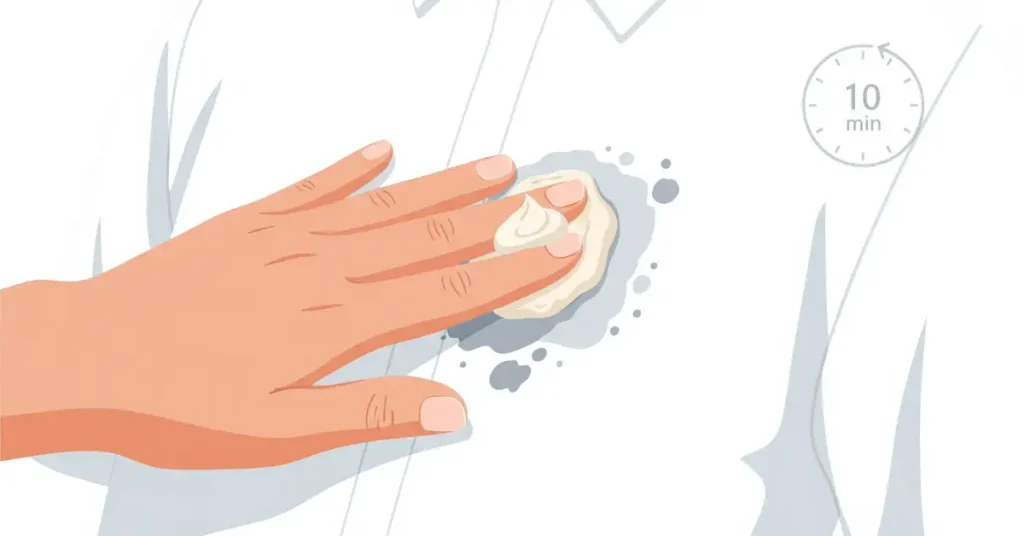
After applying the detergent or paste, I rub it gently over the stain. I try not to press too hard and then leave it for about 10 minutes.
This gives the cleaner time to work and makes it easier to remove the stain afterwards.
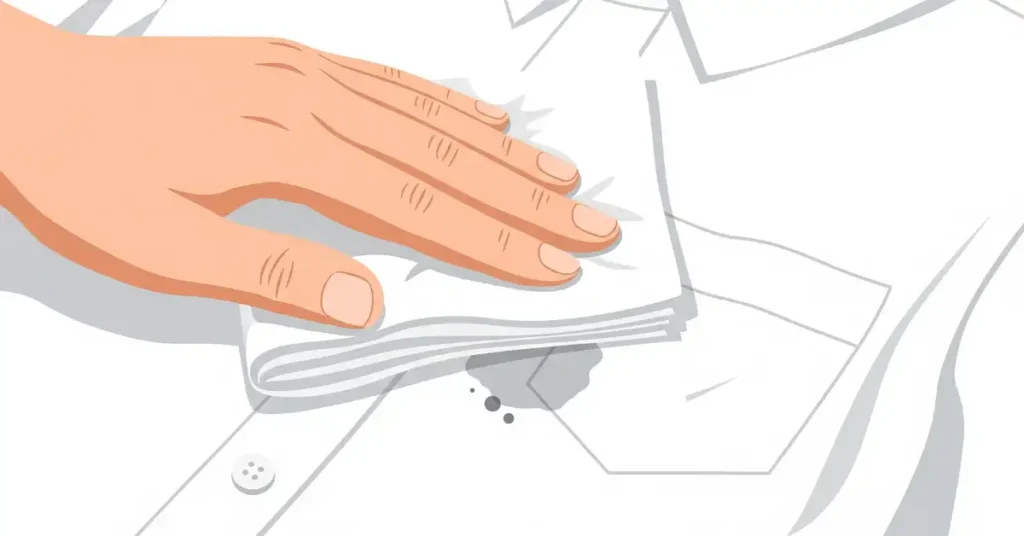
After waiting, I either rinse the area gently with water or blot it again using a paper towel.
I make sure to remove all the detergent or paste without rubbing too hard. This helps the fabric stay safe and keeps the stain from coming back.
I use this mostly for weat stains, deodorant marks, and fresh coffee or wine spots.
2. Washing Machine Method
Some stains are too big or stubborn for spot cleaning.
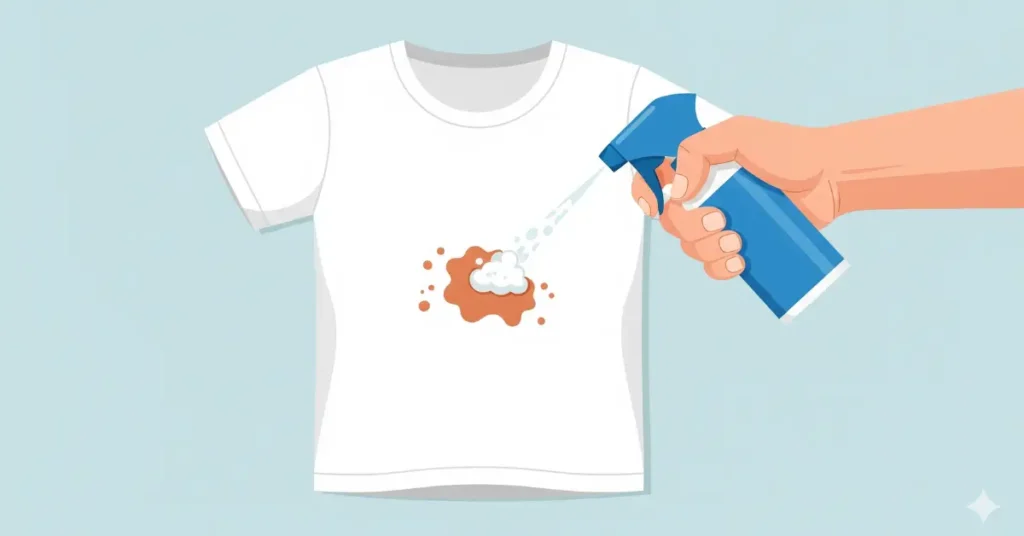
In that case, I pretreat the area with a stain remover gel or spray, then soak it in warm water mixed with detergent and oxygen bleach for about 30 minutes.
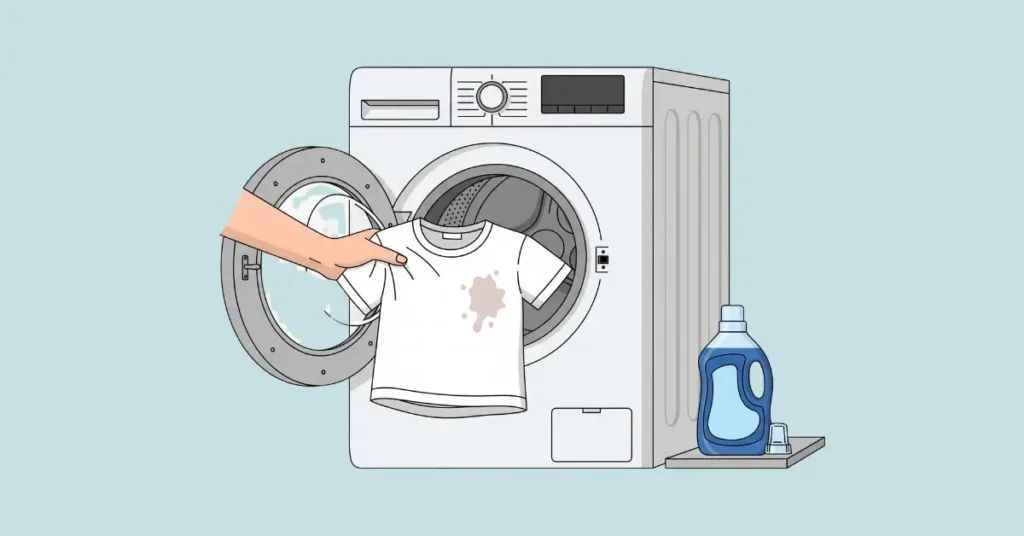
After soaking, I put the item in the washing machine with regular detergent and sometimes add baking soda or oxygen bleach as a booster. I always wash whites separately to avoid color transfer. This works best for stains from food, oil, ink, and heavy sweat.
Tip: Check your washing machine settings for whites and use gentle or Eco-friendly cycles when you can. This helps keep your white clothes bright and fresh longer.
3. Natural Home Remedies
Most of the time, I prefer natural ingredients because they are safe, affordable, and effective. Here are the ones I use the most:
Salt
Salt is one of the quickest things I reach for when there’s a fresh stain. It works like a gentle scrub and helps absorb the mark before it sets in.
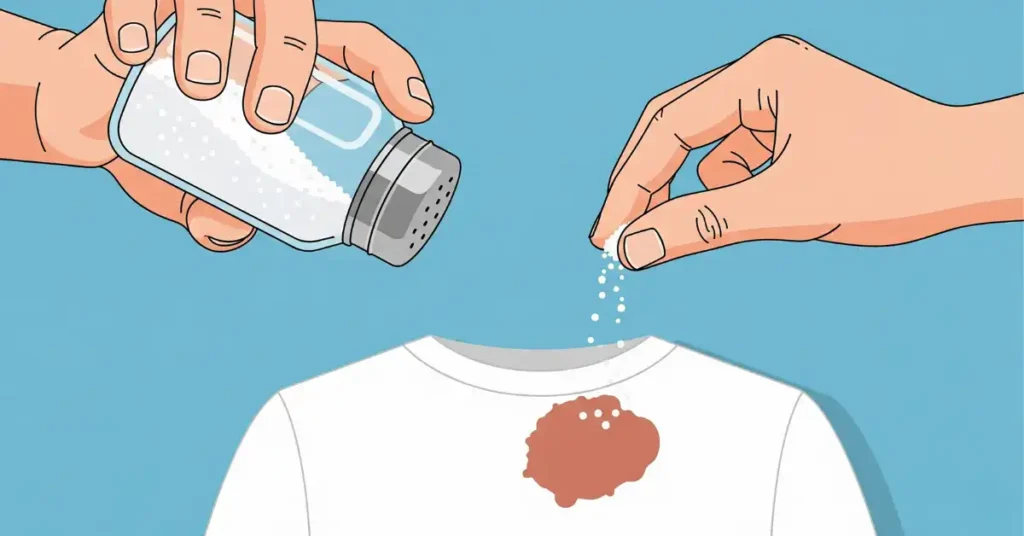
If I catch the stain early, I just sprinkle some salt right on top and let it sit for a while. It usually draws out a lot of the stain and makes washing easier.
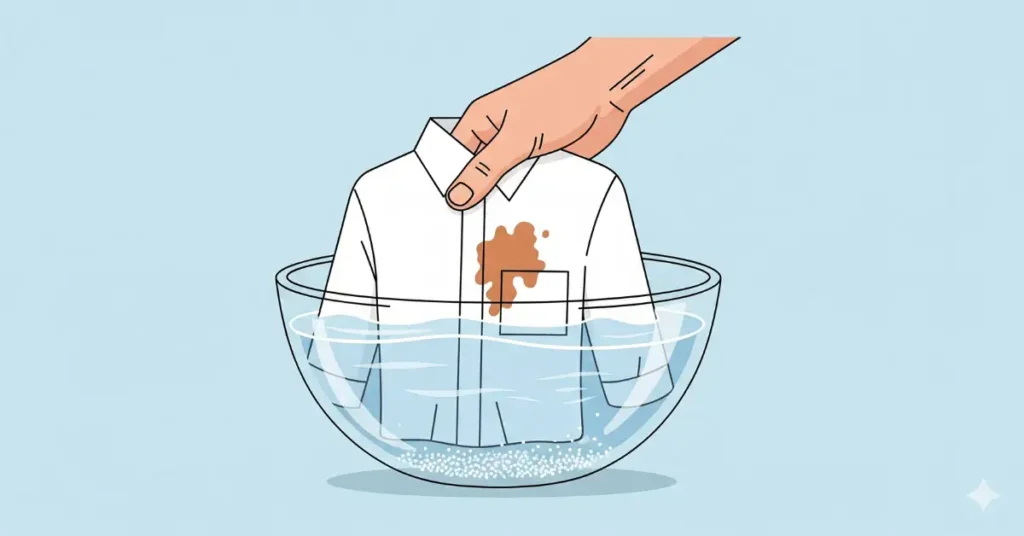
For tougher spots, I dissolve salt in cold water and soak the shirt for 20-30 minutes. This trick works especially well on fresh stains like oil, blood, ink, coffee, or wine stains.
Vinegar
Vinegar is another easy option I use when I’m dealing with stains. It’s safe, cheap, and works especially well on sweat marks, blood, and those yellow stains that show up on collars or underarms. For a long time, I couldn’t figure out why these yellow stains kept coming back. Later, I found out they actually have specific causes, which I’ve explained in my guide on why clothes get yellow stains.
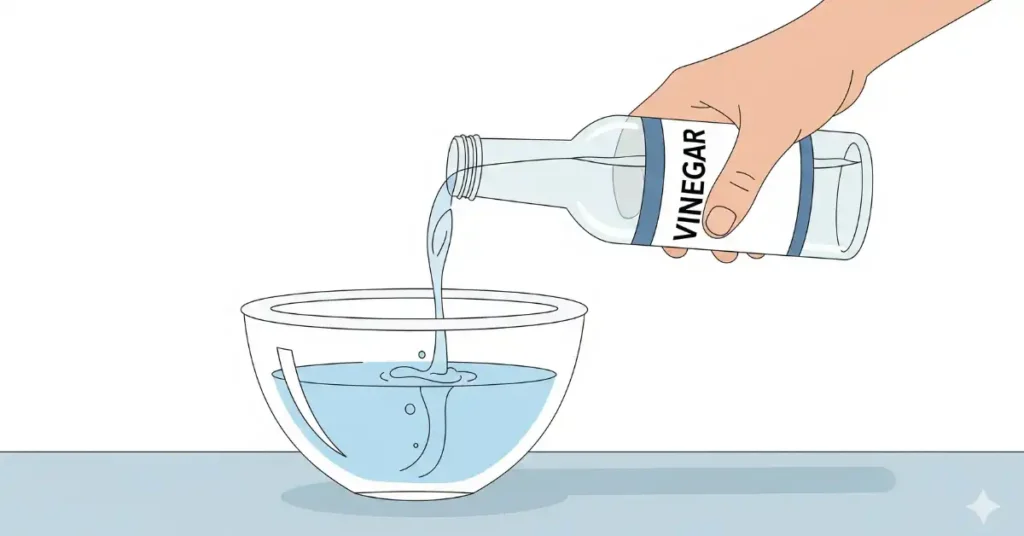
I usually mix one part vinegar with three parts water to make a gentle cleaning solution. This matters because vinegar should never be used directly on fabric.
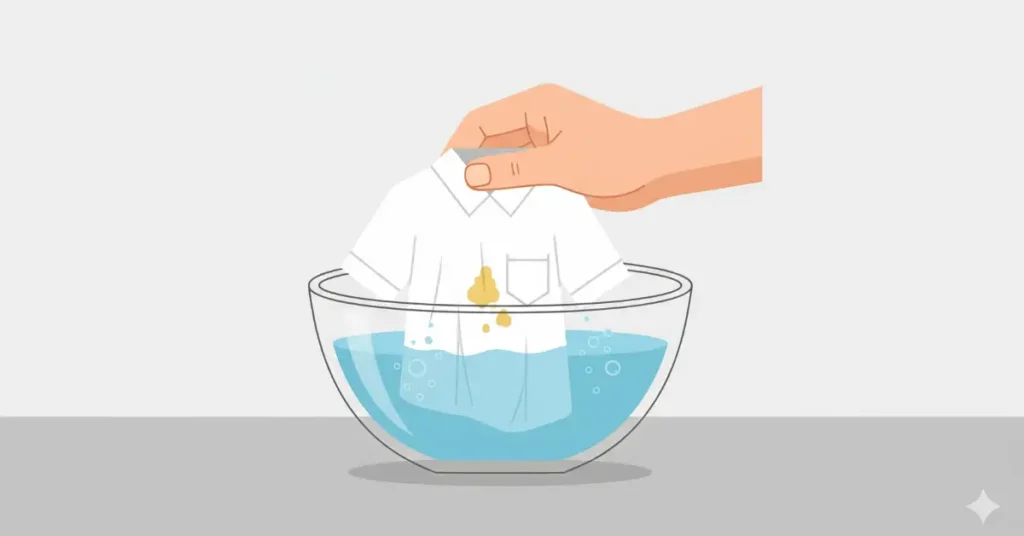
I put the stained shirt into the vinegar solution and let it soak for about an hour. After that, I wash it as usual, and the stains look much lighter.
One thing I always keep in mind is to never pour vinegar directly on the fabric and never mix it with bleach.
Baking Soda
Baking soda is gentle but powerful. It not only tackles stains but also helps remove odors from clothes.
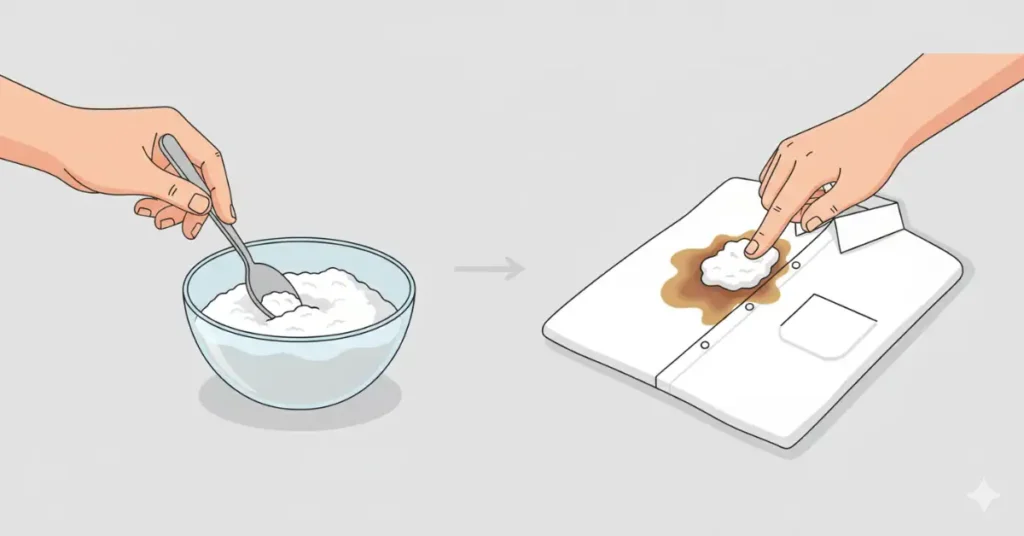
I mix baking soda with a little water to make a paste. Then I spread it directly on the stain and leave it for at least 30 minutes. For deeper stains, I sometimes keep it overnight.
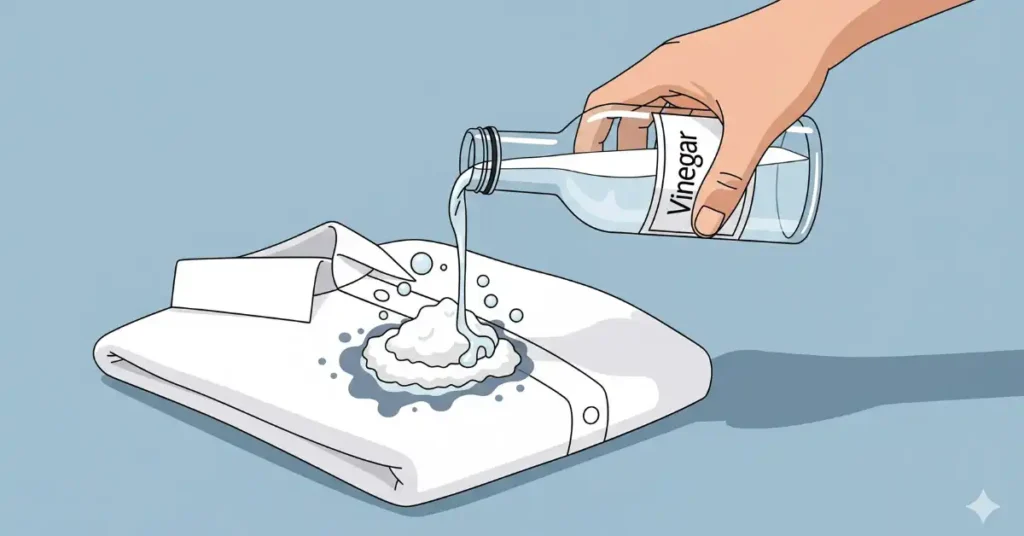
If the stain is really tough, I sometimes pour a little vinegar on top of the baking soda paste. It fizzes up and helps loosen the stain faster. This way, the vinegar reacts with the paste, not directly with the fabric, so it’s safe.
This method works well for sweat marks, food spills, wine stains, and armpit stains, and it also helps remove bad smells.
Lemon Juice
Lemon juice works great because of its natural acidity. I’ve found it really helps with stains like rust, grease, wine, and even dark marks.
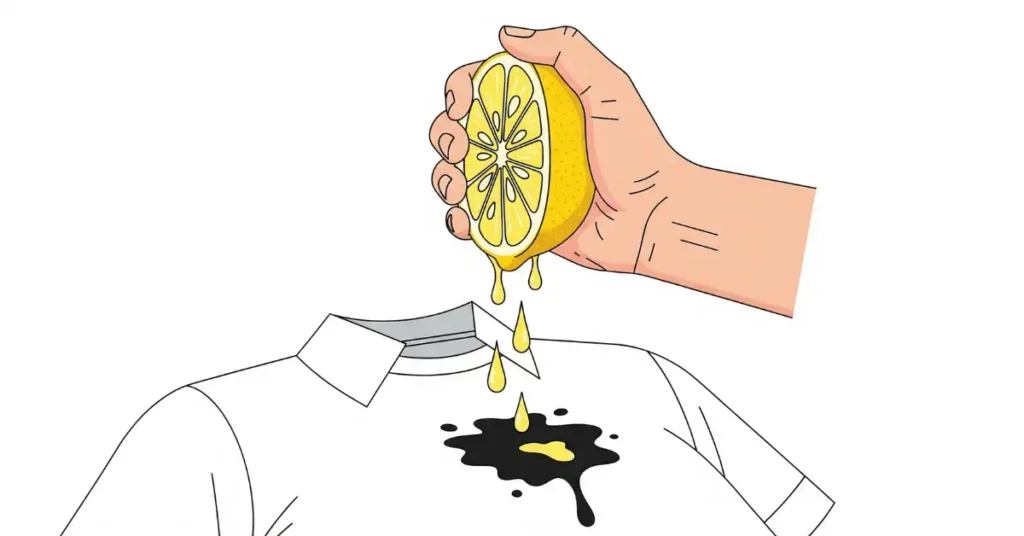
Most of the time, I just cut a lemon in half and squeeze the lemon juice directly on the stain. After a while, I can usually see the mark starting to fade.
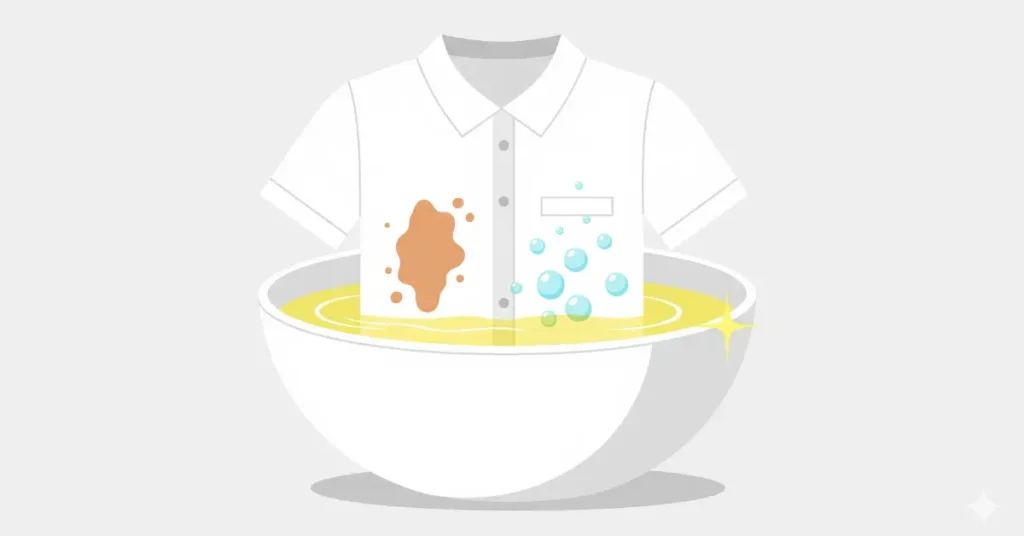
If the stain feels tougher, I mix lemon juice with water and let the shirt soak for about an hour. Once it’s soaked, washing it out becomes a lot easier.
Hydrogen Peroxide
This works like a mild bleach and can help remove tough stains while brightening your clothes.
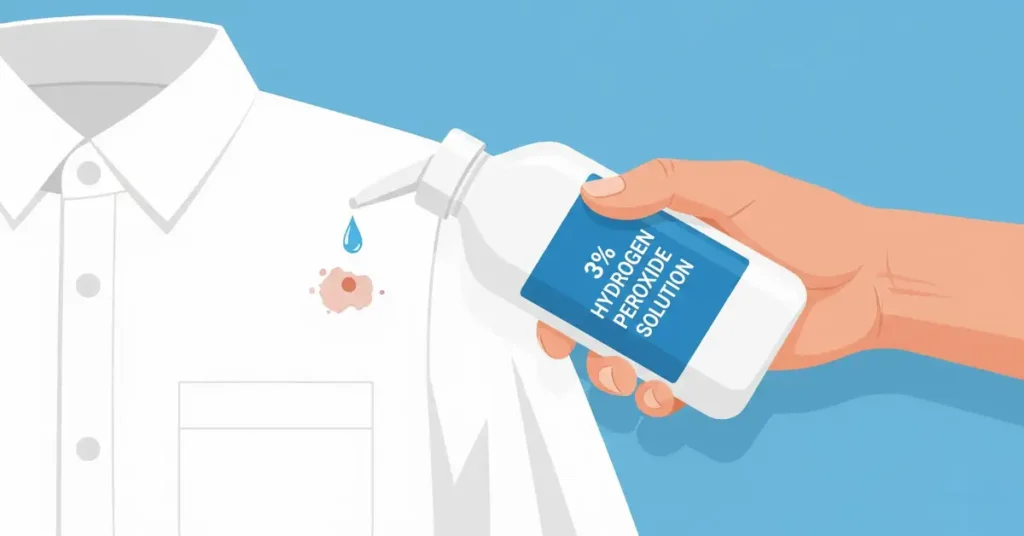
First, I use a 3% hydrogen peroxide solution and soak the stained part for about 5-10 minutes.
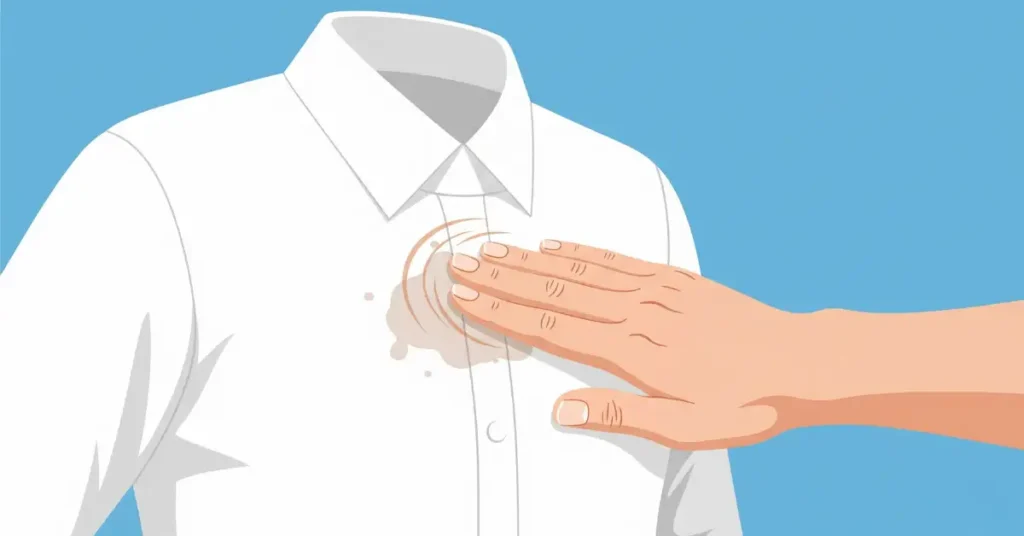
Then I rub gently and rinse with clean water. If the stain doesn’t go in one try, I repeat the step.
It’s perfect for blood and sweat stains.
Best Stain Remover Products for White Clothes
Natural home remedies usually work well for me, but there are times when I just need something quicker. Over the years, I’ve tested a few stain removers, and these are the ones I trust the most for white clothes.
OxiClean Max Force
Great for tough stains like ketchup and fruit juice. It’s easy to find in most stores and works well if you follow the directions.
Tide Free & Gentle Liquid Laundry Detergent
This one tackles greasy or oily stains without being harsh on fabrics. I like it because it’s strong but still gentle.
Aldi Di-San Pro Oxy Laundry Soaker & In-Wash Booster
An affordable option that gives results similar to the pricier brands. I often use it on everyday stains, especially for clothes and towels.
Amodex Ink & Stain Remover
This is my go-to for tricky spots like ink, marker, or even makeup. It removes the stain without damaging the fabric. But to be honest, not every product works on every fabric. That’s why I’ve also shared my full guide on removing ink stains from clothes.
Tips to Keep White Clothes Stain-Free
All the methods I’ve shared above have saved my white clothes plenty of times. But I’ve learned that prevention is always easier than fixing stains later. Here are a few simple habits that really help:
- Treat stains as soon as you notice them. Once they set in, they’re much harder to remove.
- Wash white clothes separately so they don’t pick up colors from darker clothes.
- Use detergents or boosters made for whites, especially ones with oxygen bleach or brighteners.
- Start with cold or warm water when tackling stains—hot water can make them permanent.
- Don’t overdo fabric softener, as it can leave yellow marks. A splash of vinegar works well instead.
- Dry whites in sunlight whenever possible. The sun naturally brightens and freshens fabrics.
- Always double-check that a stain is gone before tossing clothes in the dryer. Heat can lock it in for good.
Conclusion
By now, you’ve got plenty of ways to handle stains on white clothes. I know stains on whites can be frustrating, but they’re not the end of the world.
Whether you use a quick product, a simple home remedy, or a trusted detergent, there’s always something that works.
The most important thing I’ve learned is to act fast. Don’t give up on a stained shirt too quickly. Most stains come out with a little patience and the right method.
FAQs
Can vinegar remove tough stains from clothes?
Yes, vinegar can help with tough stains. It works best on sweat, blood, and yellow marks on white clothes.
Does hydrogen peroxide get stains out?
Yes, hydrogen peroxide is very effective, especially for stains like blood, sweat, and wine.
How long should clothes stay in vinegar to remove a stain?
Soak the stained area in diluted vinegar for about 30 minutes before washing.
What is the best homemade stain remover for laundry?
A simple mix of 2 parts hydrogen peroxide and 1 part dishwashing liquid works really well. Apply it to the stain for 15-30 minutes, then wash as usual.
Does Dawn take stains out of clothes?
Yes, Dawn dish soap is great for grease and oily stains and can work as a quick stain remover.
